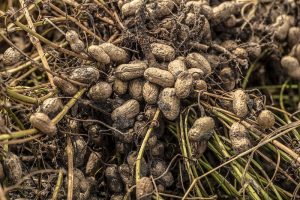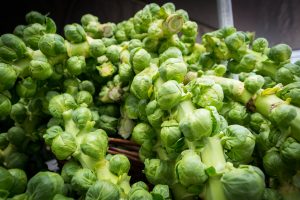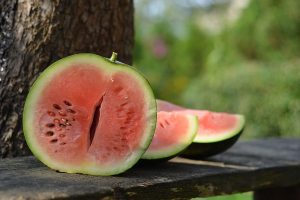
Bamboo plants are one of the most versatile and eco-friendly resources found in nature. With over 1,400 species, bamboo has been used for centuries in different cultures across the world for its exceptional strength, beauty, and sustainability. Bamboo can serve as a natural and sustainable building material, an eco-friendly substitute for plastic products or even as an ornamental plant in your garden. Growing bamboo in your backyard is not only a wise investment but will add natural aesthetics to your home’s landscaping. In this guide, we will explore some tips on how to grow bamboo successfully in your garden.
Container Growing: Potting Soil and Watering for Bamboo
To successfully grow bamboo in containers, one should consider the type of potting soil used and how it is watered. It is important to have good drainage in the container, so adding 2-3 inches of rocks or gravel at the base is recommended. The soil mix used should hold moisture evenly while allowing for good drainage. Lucky bamboo can thrive in well-drained, rich potting soil that is kept moist but not soaked. When watering, 1 to 2 gallons of water per session is generally sufficient, but larger containers or root-bound bamboo may require more. It’s also important to select the correct pot size, with a depth and width of at least 18-20 inches. Thinning the plants regularly will prevent overcrowding, and bamboo should be planted at the same depth as it was in the pot to avoid planting it too deep or shallow. Overall, container growing requires proper attention to soil and watering to ensure strong and healthy growth.
Sun Needs of Bamboo: Shade and Sun-loving Varieties
Bamboos are fascinating plants that require appropriate sunlight to thrive. In this section, we will discuss the sun needs of bamboo and varieties that can grow both in shade and full sun. When you have limited sunlight in your garden, Fargesia and other clumping varieties are ideal choices for shade-loving bamboo. These species can grow tall and lush in limited sunlight. On the other hand, Phyllostachys, the running bamboo species, thrives in full sun and requires at least five hours of sunlight each day. It is essential to understand the growth characteristics of your bamboo, as the same species will grow taller in shade than in full sun. You can select from various leafy and tall types with different stem colors and foliage to add year-round structure and movement to your garden. Whether you want to grow it in shade or full sun, having the right knowledge about bamboo’s sun needs is important to ensure their healthy growth.
Spring Planting: Encouraging Growth
Spring is the perfect time to plant bamboo if you want to encourage fast growth. Bamboo grows well when the temperatures are mild, and spring is the perfect season for this. To ensure successful planting, it’s best to dig a hole that is one and a half times the depth of your pot and twice as wide. This will provide enough room for your bamboo’s roots to spread out. Once you’ve planted your bamboo, it’s important to water it twice a week during mild weather and 3-4 times a week during hot weather. Additionally, fertilizing your bamboo twice a year, once in early spring and again during the middle of the growing season, can help to encourage new growth and replace any nutrients lost during growth. By taking the care to plant your bamboo correctly and following these simple tips, you’ll be sure to have optimal growth and healthy plants.
Lucky Bamboo: Soil Requirements for Indoor Growing
For those who want to grow lucky bamboo inside, it’s important to understand the soil requirements for indoor growing. Lucky bamboo can thrive in well-drained, nutrient-rich potting soil that is kept slightly damp, but not soaked. It’s crucial to avoid overwatering or letting the soil dry out completely. In addition to soil, lucky bamboo can also be grown in water, but the water must be refreshed every week to prevent bacterial growth. When growing in soil, it’s best to use a layer of pebbles to stabilize the plant’s stems and hold it in place. Lucky bamboo should be grown in a warm room with filtered sunlight, and it’s important to commit to a consistent watering schedule to ensure the plant stays healthy. By following these simple tips, anyone can successfully grow lucky bamboo in their home.
Soil Characteristics: Rich, Moist, Well-Drained
To grow bamboo successfully, it’s essential to pay attention to soil characteristics. Bamboo plants prefer rich, moist, and well-drained soil. This means that the soil should be fertile and contain plenty of nutrients. To achieve this, gardeners should consider improving poor soil conditions by digging in manures, compost, mushroom compost, or garden soil. Additionally, the soil should be consistently moist but not waterlogged. Proper drainage is also important for bamboo growth, so using mulch or sphagnum moss can help keep the soil moist while promoting drainage. Choose the right soil pH by opting for slightly acidic soil between 6.0 and 6.5. Bamboo can thrive in various soil types, but it performs best in sandy, loamy, rich, slightly acidic, and well-drained soils with a relatively high soil moisture content. By growing bamboo in ideal soil conditions, gardeners can enjoy a healthy and vibrant plant.
Propagation: Cutting Rhizomes for Planting
Growing bamboo from rhizomes is one of the most popular methods of bamboo propagation. To propagate new bamboo plants, simply cut sections of mature bamboo stalks containing several nodes and plant them vertically in moist and fertile soil. It’s important to choose healthy bamboo plants and cut a section of the stem at least 6 inches long with at least two nodes. Then, carefully plant the cut end in the soil while water is added around the cutting to heump the soil moist. Within a few weeks, the new bamboo plants should start emerging as shoots from the underground rhizome and will soon start to grow rapidly. So, to enjoy the beauty of bamboo in your garden, all you need is to cut the rhizomes and plant them accordingly- it’s that easy!
Sunlight Requirements: Filtered Sun for Most Species
When it comes to growing bamboo, ensuring the right amount of sunlight exposure is crucial to the health and growth of your plants. As discussed in previous sections, different bamboo species have different sunlight needs, but most of them prefer filtered sunlight for at least four hours a day. Lucky bamboo, in particular, thrives in bright, filtered light, while larger species like Golden Bamboo require at least five hours of direct sunlight per day. It is essential to avoid direct sunlight, as it may burn the leaves of the plant. It is also vital to ensure good soil moisture levels by watering the plants regularly, especially during dry and hot weather. By providing adequate sunlight and water, you can encourage the growth of your bamboo plants and enjoy their striking beauty in your garden or indoor environment.
Growth Rate: Full Sun for Fastest Growth
To encourage the fastest growth rate for bamboo, it’s important to provide the plant with plenty of sunlight. Most bamboo species require at least four hours of filter sunlight or better each day, with some varieties like the Phyllostachys needing five hours or more. For those who live in a sunny climate, this can be easily achieved by giving your bamboo a sunny spot. Remember, photosynthesis and growth are directly related to the amount of sunlight a plant receives. The more sunlight your bamboo gets, the more food it receives, and the faster it will grow. Chinese moso bamboo is the fastest-growing plant on Earth and can grow up to a meter in a single day under ideal conditions of full sun. So, if you want your bamboo to grow at maximum speed, make sure it gets plenty of sunlight!
Planting Technique: Vertical Cuttings in Moist Soil
Another important factor to consider when growing bamboo is the planting technique. It is recommended to plant the bamboo cuttings vertically in moist soil. The hole should be twice as wide as the bamboo root mass, and the cutting should be positioned to be either vertical or at a 45-degree angle. It is essential to ensure that the soil remains moist, but not waterlogged, to encourage successful growth. This technique is ideal for clump-forming species that may be difficult to propagate using other methods. It is recommended to plant the bamboo cuttings in polybags or raised beds so that the rhizomatous growth is contained. By following these planting techniques, one can enjoy the attractive and fast-growing benefits of bamboo in their garden or home.
Rhizomatous Growth: Running Bamboos and Spreading Rhizomes
Running bamboos are vigorous growers, spreading quickly and easily thanks to their rhizomatous growth. These underground stems, also known as rhizomes, help the plant to colonize new areas and spread aggressively if not contained. To keep running bamboos in check, it is important to use the right containment methods. The safest options are planting in containers or installing a 30-40 mil thick plastic rhizome barrier around the plant. This type of barrier can help prevent the rhizomes from spreading too far and taking over your garden. It is also important to note that running bamboos require annual root pruning to keep them from becoming too invasive. By taking these steps, gardeners can enjoy the beauty and exotic allure of running bamboos without worrying about them taking over their landscape.






